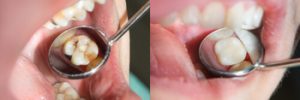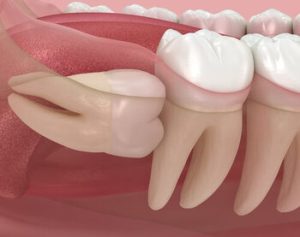Many people experience discomfort as their wisdom teeth begin to emerge, often unsure what the pain means or how long it might last. It’s common to wonder whether the pain will resolve on its own or if further care is needed. Understanding the nature of wisdom tooth pain can help ease uncertainty and guide decision-making. Knowing when to monitor symptoms and when to seek advice is an important part of protecting your oral health. This article explores what to expect from wisdom tooth pain and offers insights to help you feel more prepared.
How Long Does Wisdom Tooth Pain Last?
Many people wonder how long wisdom tooth pain will last and what it means for their oral health. Pain from wisdom teeth can vary widely depending on the situation, making it helpful to understand possible timelines.
Pain From Eruption of Wisdom Teeth
For many individuals, discomfort begins as the wisdom teeth start to break through the gum line. This pain may last several days to a few weeks as the teeth continue to emerge. Mild throbbing, gum tenderness, and sensitivity near the back of the mouth are common during this stage.
 When Impaction Causes Prolonged Discomfort
When Impaction Causes Prolonged Discomfort
If the wisdom teeth are impacted, pain may persist for a longer period. Impacted teeth remain trapped beneath the gum or within the jaw bone, leading to pressure, swelling, and aching that can continue until the issue is addressed.
Monitoring Ongoing Pain Signals
Wisdom tooth pain that does not improve or worsens over time may indicate an underlying problem. Swelling, difficulty chewing, or pain spreading to nearby areas could signal infection or irritation. In such cases, seeking professional advice is recommended to explore treatment options. Knowing how long pain might last can help you plan next steps and decide when to seek care.
Common Causes Behind Wisdom Tooth Pain
Many people ask why wisdom tooth pain varies so much from one person to another. Understanding the root causes behind discomfort can provide clarity and help identify when to seek advice. Understanding what triggers pain and why it may continue even after the initial eruption phase can provide valuable insight. Learning about these causes can help you manage symptoms effectively.
Pressure on Surrounding Teeth as a Pain Source
When wisdom teeth press against other teeth, the pressure can result in jaw pain and discomfort that lasts beyond eruption. This force may also affect the alignment of adjacent teeth. The lack of enough space in the jaw increases the chance of pain from overcrowding. Pain may feel dull or sharp depending on how much the wisdom tooth is pushing against other structures. Reducing wisdom tooth pain in these cases may require monitoring or corrective treatment to relieve pressure. Staying aware of changes in bite alignment is important during this stage.
Infection and Gum Disease Leading to Prolonged Pain
An infected wisdom tooth or nearby gum disease can cause persistent pain that lingers without improvement. Bacteria trapped under the gum line may lead to swelling, painful gums, and bad breath. Infections can also cause a bad taste in the mouth and sensitivity around the affected area. Left untreated, infection may spread and increase pain levels. Appropriate treatment is needed to resolve the infection and prevent further dental complications. Seeking care promptly can shorten the duration of pain and reduce risks.
Decay in Wisdom Teeth Causing Discomfort
Wisdom teeth are often hard to clean, elevating the risk of tooth decay in these difficult-to-reach areas. Cavities in wisdom teeth can lead to pain that feels similar to gum or eruption pain. Decay weakens the tooth structure, allowing bacteria to reach deeper layers and cause increased pain. In some cases, the pain persists until restorative treatment or wisdom tooth extraction is performed. Maintaining good oral hygiene practices reduces the chance of decay-related discomfort. Regular checkups can help detect decay early and protect overall oral health.
Tension in Jaw Muscles Adding to Pain Sensation
Jaw tension from clenching or altered chewing habits may contribute to the feeling of prolonged wisdom tooth pain. When chewing becomes uneven due to a sore area, extra stress is placed on the jaw muscles. This muscle tension can cause difficulty opening the mouth and general soreness around the jaw joint. Using a cold compress may help relieve pain from muscular strain. Stretching exercises or professional advice may also be recommended if tension persists. Reducing pressure on the jaw can lessen discomfort while the wisdom tooth continues to emerge.
Effective Strategies to Manage Wisdom Tooth Pain
Many people look for safe ways to manage wisdom tooth pain while waiting for recovery or treatment. Knowing which strategies work effectively can improve comfort and prevent worsening symptoms.
 Using Cold Compresses for Short-Term Wisdom Tooth Pain Relief
Using Cold Compresses for Short-Term Wisdom Tooth Pain Relief
A cold compress held on the cheek may help soothe pain and minimise swelling near the affected spot. Cold therapy limits blood flow temporarily, easing inflammation around the wisdom tooth. Hold the compress for short intervals to avoid skin irritation. Repeat as needed throughout the day while monitoring pain levels. Combining this approach with rest may enhance its effectiveness. Always follow safety guidelines when applying cold to the skin.
Choosing Soft Foods to Avoid Irritation
Eating soft foods reduces the strain on the affected area and prevents further irritation of painful gums. Foods like mashed vegetables, soup, and yoghurt are gentle on sore tissue. Avoid crunchy food or sticky items that may lodge near the gum line. Sticking to a soft diet supports healing while reducing pain during meals. Gradually reintroduce firmer foods as discomfort subsides. Listening to your body’s response helps guide dietary choices.
Over the Counter Painkillers for Temporary Relief
Many people use over-the-counter painkillers to relieve pain from wisdom teeth. Medications such as ibuprofen can reduce inflammation and lower pain signals.
Follow dosage instructions carefully and avoid exceeding recommended amounts. Pain relievers should be used as a temporary measure while monitoring symptoms. If pain intensifies or continues beyond a few weeks, consult a dental professional. Responsible use of painkillers can support comfort during recovery.
Warm Salt Water Rinses to Promote Healing
Rinsing with warm salt water helps clean the mouth and soothe irritated gum tissue. Salt water acts as a natural disinfectant, reducing bacteria around the wisdom tooth.
Use gentle swishing motions to avoid disturbing the affected area. Repeat rinses several times a day, especially after meals. This practice supports oral hygiene and may reduce swelling and discomfort. Avoid using mouthwash containing alcohol if the tissue is sensitive.
Keeping the Mouth Clean to Prevent Further Issues
Good oral hygiene is vital to prevent additional complications while experiencing wisdom tooth pain. A soft toothbrush allows you to brush your teeth carefully while protecting sore or tender gum tissue from further discomfort. Be cautious around the wisdom tooth to avoid disturbing inflamed tissue or a healing blood clot after wisdom teeth removal. Floss carefully between other teeth to maintain cleanliness without adding pressure to the affected area. Keeping the mouth clean reduces the risk of infection and promotes a healthy smile.
Seeking Professional Care for Wisdom Tooth Pain
Alongside self-care, professional treatment may be necessary if symptoms persist or worsen. A dental professional can examine the wisdom tooth and recommend options such as cleaning the area, prescribing medication, or planning wisdom teeth removal. Timely intervention helps prevent complications and protects surrounding teeth and tissues. Professional assessment ensures the most appropriate treatment is provided based on your specific situation.
Understanding the Wisdom Teeth Removal Procedure
Many patients feel unsure about what happens during wisdom teeth removal. Learning the steps involved can ease concerns and prepare you for the experience. This procedure is commonly performed to prevent complications such as crowding, infection, or impacted teeth.
Initial Preparation and Anaesthesia
Before the procedure begins, the dentist will explain the process and answer any questions. A local anaesthetic is applied to numb the area around the wisdom tooth. In some cases, sedation may be recommended to help you stay calm and comfortable.
Accessing the Tooth and Surrounding Structures
The dentist makes a small incision in the gum tissue to expose the tooth if it has not fully emerged. If the bone is covering part of the tooth, a small amount of bone may be removed to gain access.
 Loosening and Removing the Tooth
Loosening and Removing the Tooth
The wisdom tooth is gently loosened using specialised instruments. In certain cases, the tooth may be divided into smaller pieces for easier removal. Once loosened, the tooth is carefully extracted.
Closing the Site
After the tooth is removed, the dentist cleans the area and stitches the gum tissue if needed. A gauze is placed to help control bleeding and encourage a blood clot to form.
This treatment process is designed to remove wisdom teeth safely while protecting surrounding tissues.
Supporting a Healthy Smile During and After Wisdom Tooth Pain
Experiencing wisdom tooth pain can be challenging, but knowing how to respond empowers you to protect your oral health. Pain duration depends on many factors, including the tooth’s position, the health of the gum tissue, and whether treatment is required. By following care recommendations and staying attentive to changes, you can reduce discomfort and avoid serious complications. If you experience wisdom tooth growing pain that worsens or does not improve, call our clinic at (02) 6188 7103 to book an appointment and restore comfort.
Note: Any surgical or invasive procedure carries risks. Before proceeding, you should seek a second opinion from an appropriately qualified health practitioner.
References
https://www.healthline.com/health/wisdom-teeth-pain-relief
https://www.colgate.com/en-in/oral-health/wisdom-teeth/wisdom-teeth-pain-relief-how-to-find-comfort-0515


 When Impaction Causes Prolonged Discomfort
When Impaction Causes Prolonged Discomfort Using Cold Compresses for Short-Term Wisdom Tooth Pain Relief
Using Cold Compresses for Short-Term Wisdom Tooth Pain Relief Loosening and Removing the Tooth
Loosening and Removing the Tooth




